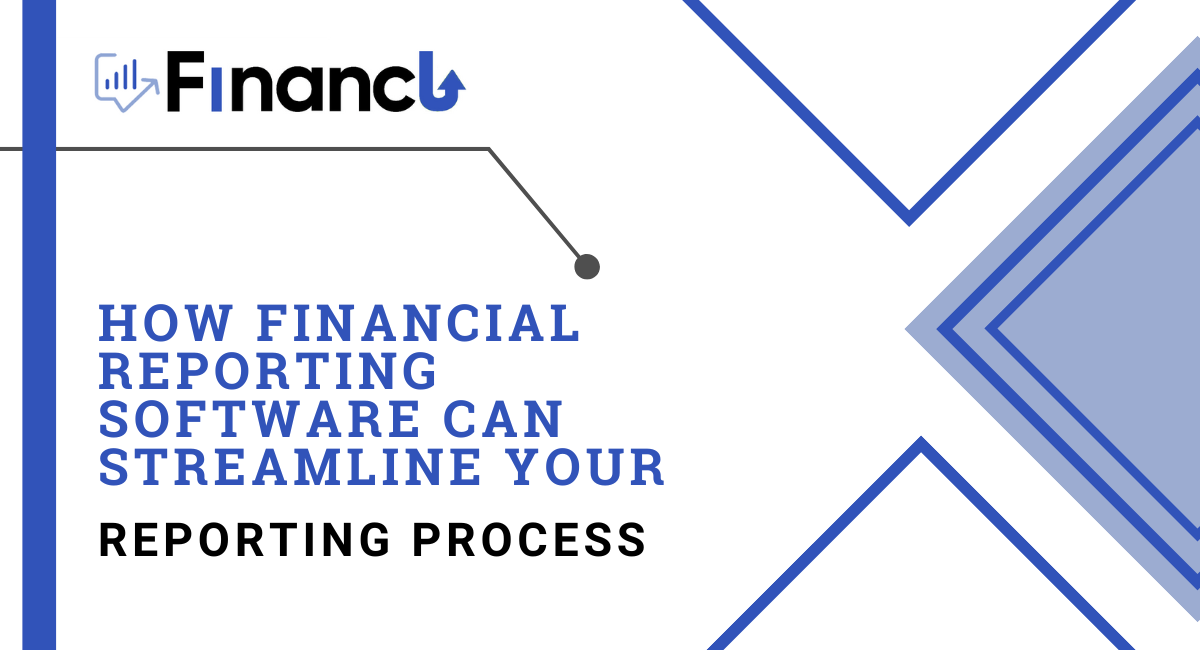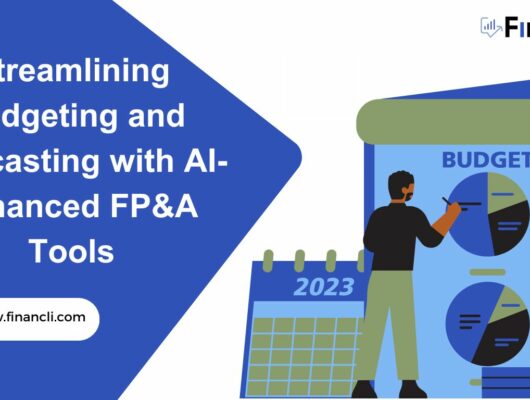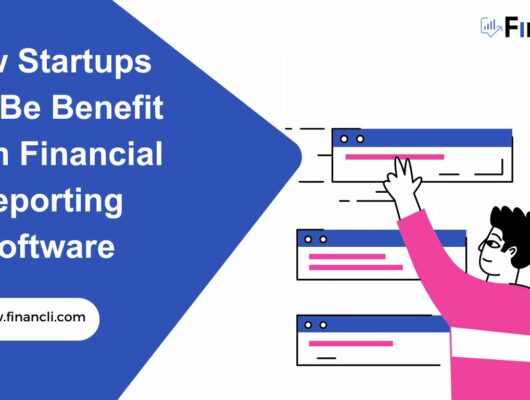
As businesses continue to grow and evolve to address customer concerns and provide improved services, the need for software that complements business owners’ demands for better and more accurate financial reporting has also increased.
Financial reporting software has dramatically changed and improved how we draw financial reports and analyze our business performance. This article sheds light on how financial reporting software has streamlined business reporting processes.
1. Automation

At its core, financial reporting software is an automatic system that creates and organizes financial information without manual labor. It seamlessly conducts repetitive yet attention-demanding tasks such as data entry, calculations, compilation, and report generation.
Automating complex tasks that involve constant calculations without the margin for human error is the prime way a financial reporting system streamlines the reporting process. As a result, the financial reports generated by financial reporting software are updated and free from potential errors.
Automation eliminates manual data entry, reducing the chances of mistakes and saving time. The software connects to various data sources and retrieves relevant information automatically, such as bank transactions, sales figures, and expenses. It further aggregates data from multiple sources, such as various departments or subsidiaries, and consolidates it into a single report.
The software can analyze the data, identify trends, and highlight key performance indicators. This can provide insights into the organization’s financial health, enabling managers to make informed decisions. For example, if a business has to enter data into a spreadsheet manually, there is a high chance of data entry errors, leading to inaccurate financial reports. Financial reporting software automates this process, thereby reducing the risk of errors.
Not only this, the process of automation saves precious time for financial experts and accountants, who can direct their focus to more important tasks and decision-making processes.
2. Standardization

As businesses continue to grow and expand exponentially, business owners and accountants have little time to indulge in petty tasks such as generating reports, especially following a standardized process and procedure. Since the financial reporting process of financial reporting software is entirely automated, users are assured of getting standard report templates that follow accepted accounting principles.
This standardization can reduce the time required to prepare reports by eliminating the need for manual formatting and calculations. With standardized templates, information can be generated quickly and easily. These reports are not just instant but also consistent. Standardization allows the financial reporting software to present financial data across reports consistently. This consistency helps to ensure clarity and understanding of the reporting process.
It also helps organizations comply with regulatory requirements by providing standard formats for financial statements that meet industry standards and regulations. Standardized reports also reduce the potential for errors in calculations and formatting. All these processes finally facilitate communication between different departments and stakeholders by providing a common language and framework for financial reporting.
3. Customization

One of the key features of financial reporting software is the ability to create customized reports. Users can select the data fields they want to include, format the information to their liking, and choose the frequency and timing of the information. This customization enables users to create reports tailored to their specific needs and preferences, making them more valuable and relevant.
It also helps eliminate clutter and focus on the most crucial financial information. Customization can also make identifying trends, patterns, and outliers easier. Financial reporting software can be customized to provide a user-friendly interface that simplifies the reporting process.
For example, personalized dashboards display key performance indicators, making monitoring financial performance in real-time more accessible. In addition, they present data to reflect the needs and preferences of individual users.
Integration with desired software is another customization feature where financial reporting software excels. Financial reporting software can be customized to integrate with other systems, such as accounting software, ERP systems, and data warehouses. This can improve the accuracy and completeness of financial data and reduce the time required for data entry and reconciliation.
4. Accessibility

Business dynamics today are very different from how they were a decade ago. Businesses are more mobile now, and business owners are constantly on the go. Frequent traveling is unavoidable, yet the worry of financial information and its accuracy is a genuine concern that financial reporting software has solved.
Financial reporting software allows users to access financial data from anywhere, at any time, as long as they have an internet connection. This accessibility means businesses can quickly generate reports and access financial data, even if their employees work remotely.
Access to accurate real-time data enables users to monitor and analyze financial performance as it happens, so business owners and decision-makers make timely and informed decisions based on current financial information.
The availability of financial reporting software on mobile devices makes it extremely easy and accessible. It enables users to access financial data and reports from anywhere. This can increase flexibility and productivity, allowing users to access critical financial information on the go. Business owners no longer have to delay their decisions or travel long distances to review their financial health and make decisions accordingly.
Not only this, their instant reports have collaborative features, such as document sharing, commenting, and version control.
5. Collaboration

Effective communication and collaborative efforts have a beneficial impact on organizational growth. Studies reveal that collaboration enables workers to focus on challenging tasks 64% longer than non-collaborative work dynamics.
Collaboration is a prime benefit of reporting process of financial reporting system since it improves communication between different departments and stakeholders, streamlining the reporting process.
Financial reporting software can provide real-time collaboration features that enable team members to work together on the same report simultaneously. This reduces the time in producing reports and increases productivity.
Commenting and feedback on data enable team members to provide feedback on the report and make suggestions for improvement. Since all information is accessible to all, financial reporting software can help remote work by allowing users to access financial data and reports from anywhere with an internet connection.
6. Data Analysis

The ability to seamlessly and flawlessly analyze vast volumes of data is one of financial reporting software’s primary features and benefits. Financial reporting software can research financial data to identify trends, patterns, and anomalies.
Data analysis capabilities of financial reporting software are not limited to studying and presenting existing data. It extends beyond and encompasses financial forecasting and identifying trends and patterns that drive important decisions.
For example, this analysis can be used to generate reports that provide insights into financial performance, such as revenue growth or cost reduction opportunities.
Financial reporting software gathers information and analyzes finances from balance sheets, cash flow statements, income statements, and more. All this data is available in easy-to-comprehend visualizations, such as charts, graphs, and tables. This can help users quickly identify trends and patterns in the data, skip endless meetings, and jump straight to strategizing and planning.
Financial reporting software can provide key performance indicators (KPIs) highlighting an organization’s most critical financial metrics. This can help users focus on the most crucial financial information to make informed decisions.
Additionally, it provides drill-down functionality that allows users to explore the data in more detail so users can identify the root cause of a particular trend or pattern in the data. Finally, financial reporting software has predictive capabilities where it can provide predictive analytics that forecast future economic trends and outcomes. This can help organizations plan and prepare for future business conditions.
7. Data Visualization

Compiling a financial report is a tedious task. However, reviewing those reports and studying them thoroughly for further planning is daunting for stakeholders. In addition, sifting through pages of complex calculations and inferences makes it challenging to retain focus and remember all the findings.
Financial reporting software’s data visualization abilities make reporting easy, quick, and understandable. Data visualization techniques, such as charts, graphs, and tables, present financial information clearly and concisely. This can improve the readability of reports and enable stakeholders to understand critical financial information quickly.
The customizable dashboards enable users to create and save their data visualization templates and access real-time reports of their required metrics. This saves time and energy without compromising on effectiveness and accuracy. It also enables tracking key performance indicators and identifying trends and patterns.
Financial reporting software can provide interactive reports that enable users to drill down into financial data and explore different scenarios. This can improve collaboration and help stakeholders to make informed decisions based on accurate and up-to-date financial information.
8. Consolidation

Financial reporting for a business based in a single location may be less challenging. However, gathering, organizing, and presenting financial data for multi-location companies or subsidiaries is impossible for a human. Moreover, even if they manage to do so, the chances of error are too high.
Many financial reporting software solutions offer the ability to consolidate financial data from multiple sources or entities, such as subsidiaries or business units. This function streamlines the reporting process by automatically aggregating financial data, reducing the time and effort required to gather and consolidate data manually.
Furthermore, it standardizes the consolidation process by enforcing consistent reporting templates and formats across different entities or subsidiaries to eliminate confusion and ensure that financial data is presented consistently.
Financial reporting software can provide real-time access to consolidated financial data, allowing users to monitor and analyze financial performance across multiple entities or subsidiaries in real time. It also eliminates inter-company transactions in the consolidation process, reducing the complexity and potential for errors in manual consolidation.
9. Forecasting

Forecasting is critical to business growth and success. Innovative businesses plan based on data-driven predictions and make timely decisions for their business, mitigating risks before they arise and making more intelligent decisions. However, manual forecasting is tricky. It involves a greater chance of error and inaccuracy that can cost businesses dearly.
Thankfully, intelligent financial reporting by the financial reporting software not only compiles financial data but uses it to predict trends and upcoming challenges. Forecasting significantly streamlines the reporting process, enabling businesses to project future financial performance.
In addition, by analyzing historical financial data, the software can generate revenue, expenses, and cash flow forecasts, which can be helpful for budgeting and financial planning. Using financial reporting software, users test different assumptions and outcomes based on various scenarios. This can help organizations plan for business conditions and make informed decisions.
Even better, all these features are accessible in real-time, so companies have a constantly updated procedure before them so organizations can identify trends and patterns and adjust their forecasts accordingly. Financial reporting software can provide KPIs that help users track performance against forecasted metrics. This allows organizations to identify their weaknesses and take corrective action.
10. Integration

Finally, the way financial reporting software can integrate with other business systems significantly streamlines the reporting process by enhancing accessibility and collaboration. This automated sync of financial data with other software contributes to better reporting and analysis.
Financial reporting software has capabilities to integrate data from various sources, including accounting software, ERP systems, and other databases. This allows a quick and error-free compilation of data from multiple sources and ensures that financial data is accurate and up-to-date.
Also, financial reporting software can integrate with other reporting tools, such as Microsoft Excel or Google Sheets, allowing users to generate reports using familiar tools, reducing the learning curve and enabling users to produce information more quickly.
Financial reporting software can integrate with workflow tools, such as project management software or email, to enable users to track tasks, receive notifications, and collaborate with team members.
In addition, it can integrate with cloud services, such as Google Drive or Dropbox, to enable users to store and share reports in the cloud. This can improve accessibility and would allow users to access accounts from anywhere.
Conclusion
Financial reporting software is a blessing in disguise that answer all modern business concerns. The several valuable features and automation have significantly streamlined reporting process for users.
If you wish to grow your business with financial reporting software, go for Financli. Our intelligent financial planning and analysis software is loaded with the best features that make financial reporting a piece of cake and prove to be the eBay business partner. So reach out today to learn more and sign up.






